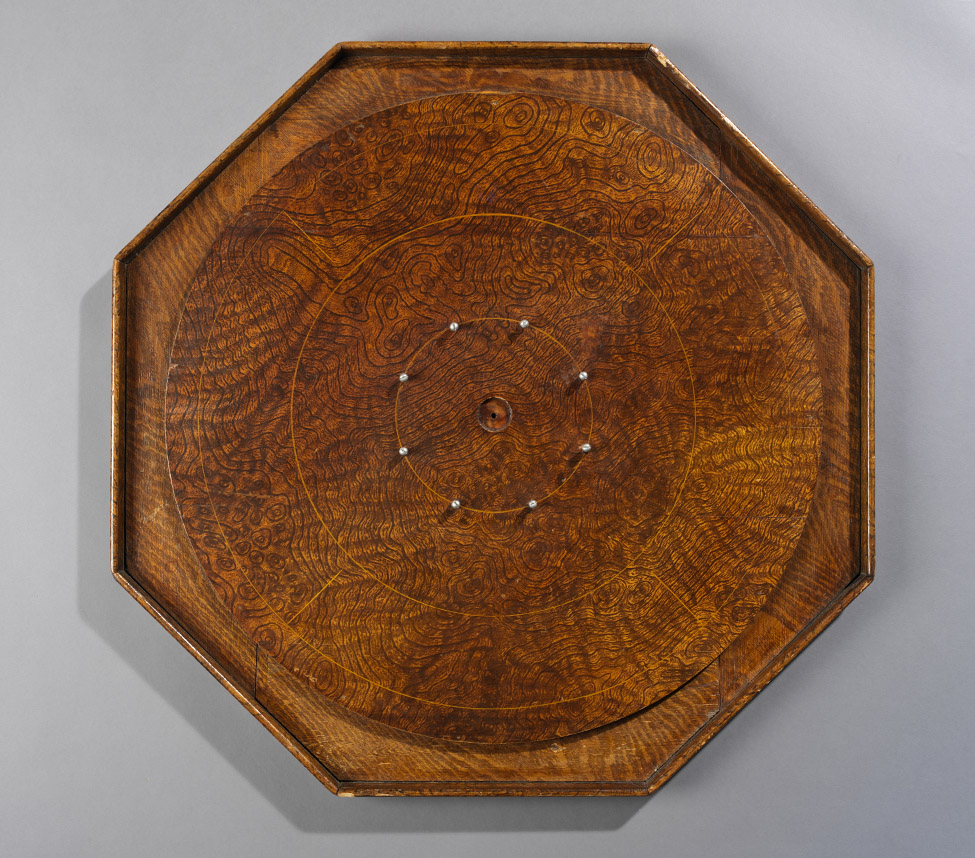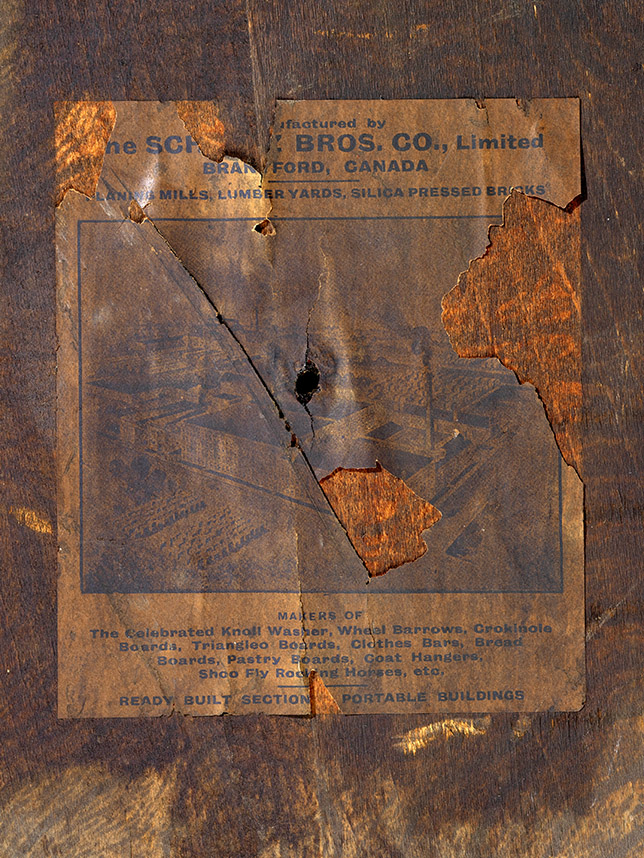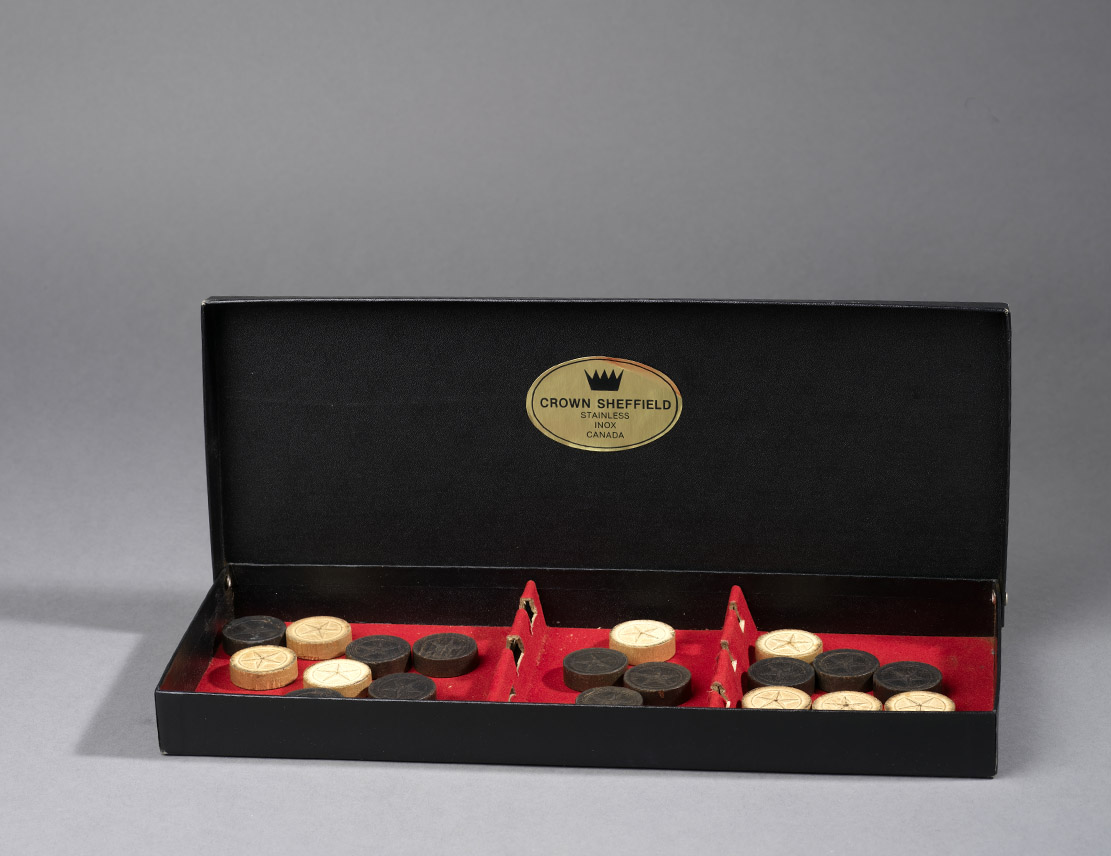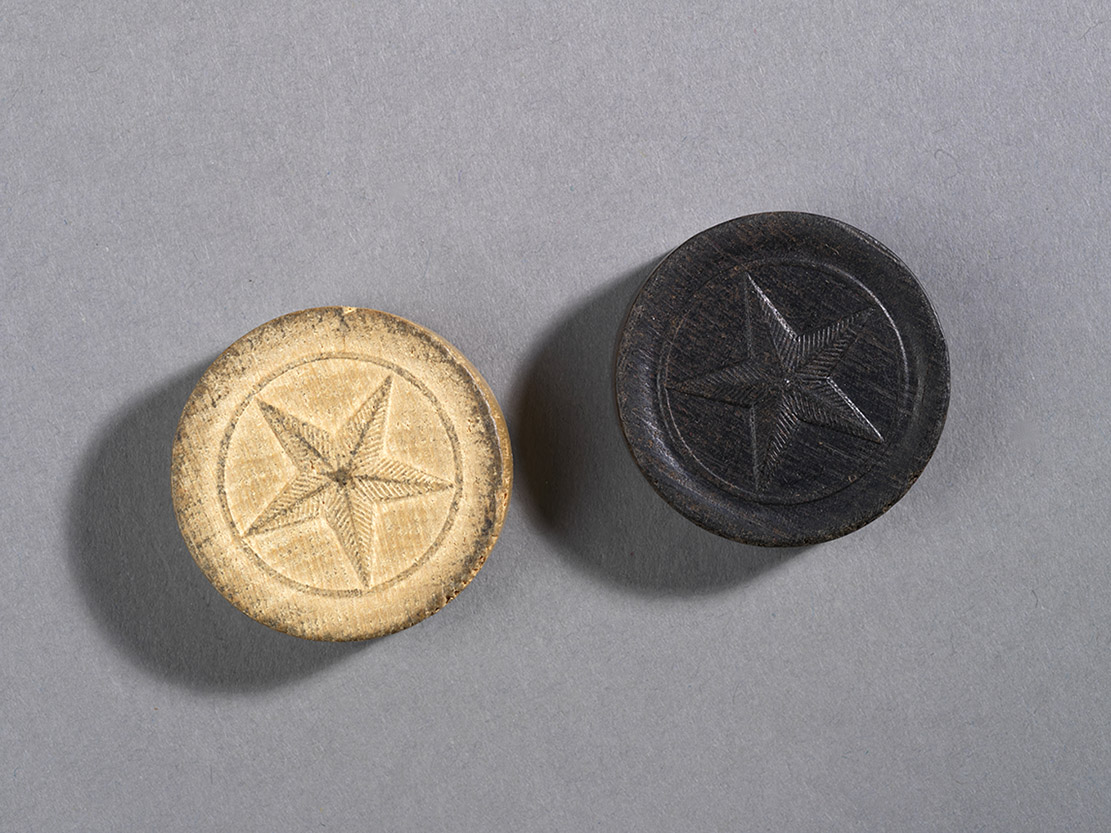CANADA 150 – Ontario – Crokinole Board
Published
Categories
Author
Blog Post
One of my favourite objects in the Canadian Decorative Arts Collection is the crokinole board. The board at the ROM dates from 1890-1910 and was made by the Schultz Brothers in Brantford, Ontario. It is oak, with painted wood details. The set contains all 24 pieces. The board was donated by Mrs. Patricia O’Driscoll and came to the museum in 1986. Museum records about donations like this, about items of this value, are often scant. So, we are left to imagine the history of this board, and the fun that it must have seen during its first hundred years.

The game is played between two people, who sit around a circular board, flicking small discs towards a centre hole. Each player gets 12 shots. The board is divided into three sections, with each section being worth 5, 10 or 15 points. If you can sink your disc into the centre hole, you score 20 points. You are always supposed to aim for the centre hole, and if you miss, your piece gets to stay on the board. Unless one of your opponents pieces is on the board, and then you have to try to knock them off first. Once all 12 shots have been flicked by each player, players count their points to see who wins.
My family had a crokinole board when I was growing up, just east of Toronto. I remember spending many summer afternoons flicking tiny disks across the board, as my older brother and I wiled away the lazy days. Sometimes I would whack my nails into the board's edge, which could be quite painful. Sometimes, I would achieve the perfect shot, getting the disk to slide effortlessly into the centre hole, scoring 20 points. More often than not, though, my brother would get the 20s. I remember the day my grandfather brought our crokinole board over for Christmas. It was the largest Christmas gift I had ever seen.

My personal memories of the game aside, I love that an object like this is in the ROM’s collection. Often, museums collect rare objects, valuable objects, and objects that speak to large moments in history. We have some of those in the Canadian Decorative Arts collection: expensive pieces of silver, valuable religious objects, and fine furniture among the varied collection. And in the other galleries at the ROM, there are treasures from around the world. Those objects are amazing, and we are so lucky to be able to take care of them at the ROM, so that people can visit them and learn from them.
However, I also believe there's value in collecting the material culture of the everyday. And not just everyday items like spoons and forks and blanket boxes, but the everyday things that brought people joy and laughter. I also believe there's real value in people learning about the folk culture and customs of the land that they are living on, and crokinole, as it turns out, is an Ontario game.

Some people suggest the game was invented in the 1860s, but exact history is difficult to pin down. The earliest known crokinole board was created by Eckhardt Wettlaufer in 1876, said to be a gift for his son's fifth birthday (it’s currently on display at the Joseph Schneider House in Waterloo - http://josephschneiderhaus.com/). The game gained popularity among Germanic Mennonite communities in Southwestern Ontario in the late 1800s. Cards, another common game of the time period, were considered to be related to gambling and therefore sinful; crokinole provided a religiously appropriate way to pass time in the evenings. There are records showing crokinole tournaments and circles set up between neighbours, which lasted many years. Eventually, the game spread into the US, and J.K. Ingalls filed a patent. Toy companies produced and sold the board widely up until the Second World War. Crokinole's popularity declined, along with many other analog forms of recreation, with the advent of television into North American homes.
But it did not disappear, and has, in recent years, been experiencing something of a renaissance. There is an annual world championship held in Tavistock, Ontario (the first Saturday in June), a documentary and a book (both by Wayne Kelly). Thanks to the widespread board game renaissance in North America, crokinole is finding new audiences.

I remember being quite surprised when I first moved outside the province and spoke about the game with some new friends. It hadn't occurred to me that people didn't know how to play crokinole. Now, I'm honestly a bit proud that Ontario is the home of this quirky, fun game. And like I said, I love that the ROM has an old board, helping to preserve an element of Ontario's history, in addition to the wider scope of work that happens here.


